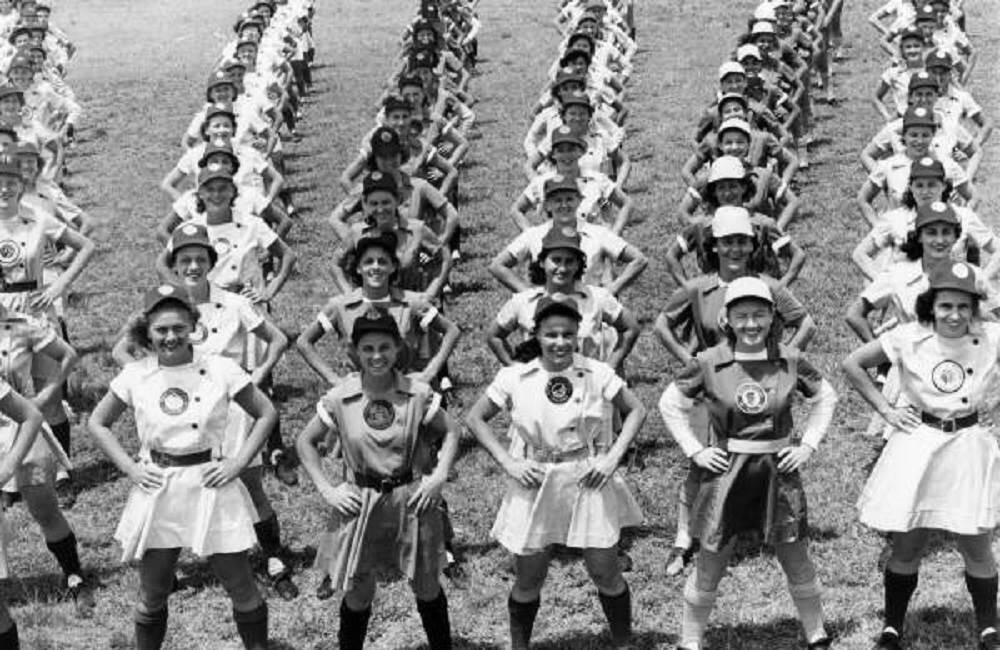World War 2, which most historians agree began with the 1939 invasion of Poland by Germany, ended in 1945 with the surrender of Japan.
For those in the United States, the full effect of the war was felt after Japan’s attack on Pearl Harbor in December 1941. That led to the U.S. joining the Allied powers against the Axis: Germany, Italy and Japan.
The impact of the war extended to Major League Baseball, as well, both for those who went overseas and those back at home.
World War 2 Effect
Baseball was far and away the favorite sport in the country in the 1940s. Fans watched as many players left to join the military in the conflict. They included stars such as Ted Williams, Stan Musial, Joe DiMaggio, Yogi Berra, Pee Wee Reese and Hank Greenberg.
Cleveland Indians pitching star Bob Feller famously drove to a Chicago Navy recruiting office and volunteered for service after the attack on Pearl Harbor.
In all, 500 Major League players and more than 2,000 minor league players left to join the military, according to the American Veterans Center.
Two major league players died in World War 2. Harry O’Neill, a catcher from Philadelphia, had so much potential that he was the object of a bidding war. Eventually, the Philadelphia Athletics got him. However, he caught just two innings of one game. He enlisted in 1942, became a first lieutenant in the Marines and died securing Iwo Jima.
Eugene Gedeon, a three-sport star from the University of Michigan, died while flying a bombing raid into occupied France.
Hitler Youth Stadium
One of the remarkable stories that involves World War 2 and baseball happened after the defeat of Germany. A team of racially mixed U.S. players – including Negro League player Leon Day – formed teams that competed in a league. They played many of their games at the Hitler Youth Stadium in Nuremberg, where Adolf Hitler had lead many Hitler Youth rallies. That included a five-game “World Series” in September 1945.
Back at Home
President Franklin Roosevelt – in his Green Light Letter – had given his endorsement for baseball to continue during the war. He wrote: “I honestly feel that it would be best for the country to keep baseball going. There will be fewer people unemployed and everybody will work longer hours and harder than ever before. And that means that they ought to have a chance for recreation and for taking their minds off their work even more than before.”
While the statistical numbers were down during these years with so many talented players gone, the game itself grew in popularity as the war went on. Perhaps, as Roosevelt had predicted, people needed a chance to have their mind taken off war and work.
The World Series was held every year of the war. It took a players’ strike in 1994 to finally lead to cancellation of a World Series (other than the one in 1904 when the New York Giants refused to play the American League champion Boston Americans).
All-American Girls
Many minor league teams disbanded because so many young men were drafted. However, Chicago Cubs owner Philip K. Wrigley tasked an assistant to the team’s general manager, Ken Sells, to find a solution.
That solution was creation of the All-American Girls Professional Ball League .
What’s in a name? Well, it was originally called the “softball league” and then changed to “baseball league” because it played by Major League Baseball rules. However, some complained because it allowed underhand pitching and smaller diamonds, so the name was changed to “ball league.” It then went back to “baseball league” from 1945 to 1950.
The teams played in the Midwest. They included these teams (not every team played every year):
- Battle Creek Belles in Battle Creek, Mich.
- Chicago Colleens in Chicago
- Fort Wayne Daisies in Fort Wayne, Ind.
- Grand Rapids Chicks in Grand Rapids, Mich.
- Kalamazoo Lassies in Kalamazoo, Mich.
- Kenosha Comets in Kenosha, Wis.
- Minneapolis Millerettes in Minneapolis, Minn.
- Milwaukee Chicks, in Milwaukee, Wis.
- Muskegon Lassies, in Muskegon, Mich.
- Peoria Redwings in Peoria, Ill.
- Racine Belles in Racine, Wis.
- Rockford Peaches in Rockford, Ill.
- South Bend Blue Sox in South Bend, Ind.
- Springfield Sallies in Springfield, Ill.
Popularity waned after the war ended, although the league continued until 1954. The league came back into popularity with the 1992 film A League of Their Own. While fictional, the movie did realistically depict issues such as how the players were made to wear skirts and lipstick while playing. However, it also showcased the talents of many of the players and is now considered one of the ways spirits were kept up at home during the long war.


I love it!!!!!!!!!!!!!!!!!!!!!!!!!!!!!!!!!!!!!!!!!!!!!!!!!!!!!!!!!!!!!!!!!!!!!!!!!!!!!!!!!!!!!!!!!!!!!!!!!!!!!!!!!!!!!!!!
?
?